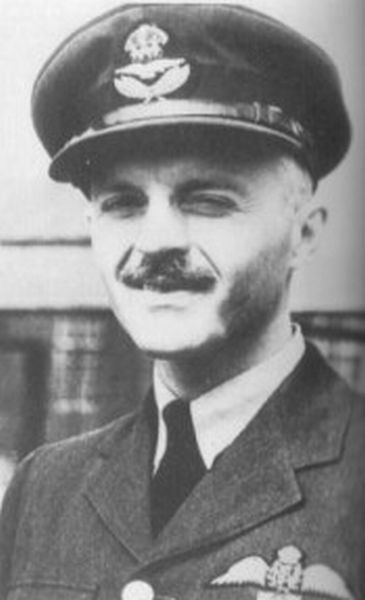Hornell, David Ernest
- Date of birth:
- January 26th, 1910 (Mimico/Ontario, Canada)
- Date of death:
- June 24th, 1944 (Near Faroes, Atlantic Ocean)
- Buried on:
- Commonwealth War Graves Lerwick Cemetery
Plot: 7B. Grave: 17. - Service number:
- J/7594
- Nationality:
- Canadian
Biography
Do you have more information about this person? Inform us!
- Period:
- Second World War (1939-1945)
- Rank:
- Flight Lieutenant
- Unit:
- No. 162 Squadron, Royal Air Force
- Awarded on:
- July 28th, 1944
"Flight Lieutenant Hornell was captain and first pilot of a twin-engined amphibian aircraft engaged on an anti-submarine patrol in northern waters. The patrol had lasted for some hours when a tully-surfaced U-boat was sighted, travelling at high speed on the port beam. Flight Lieutenant Hornell at once turned to the attack. The U-boat altered course. The aircraft had been seen and there could be no surprise. The U-boat opened up with anti-aircraft fire which became increasingly fierce and accurate.
At a range of 1,200 yards, the front guns of the aircraft replied; then its starboard gun jammed, leaving only one gun effective. Hits were obtained on and around the conningtower of the U-boat, but the aircraft was itself hit, two large holes appearing in the starboard wing. Ignoring the enemy's fire, Flight Lieutenant Hornell carefully manoeuvred for the attack. Oil was pouring from his starboard engine which was, by this time, on fire, as was the starboard wing; and the petrol tanks were endangered. Meanwhile, the aircraft was hit again and again by the U-boat's guns. Holed in many places, it was vibrating violently and very difficult to control.
Nevertheless, the captain decided to press home his attack; knowing that with every moment the chances of escape for him and his gallant crew would grow more slender. He brought his aircraft down very low and released his depth charges in a perfect straddle. The bows of the U-boat were lifted out of the water; it sank and the crew were seen in the sea.
Flight Lieutenant Hornell contrived, by superhuman efforts at the controls, to gain a little height. The fire in the starboard wing had grown more intense and the vibration had increased. Then the burning engine fell off. The flight of aircraft and crew was now desperate. With the utmost coolness, the captain took his aircraft into wind and, despite the manifold dangers, brought it safely down on the heavy swell. Badly damaged and blazing furiously, the aircraft rapidly settled.
After ordeal by fire came ordeal by water. There was only one serviceable dinghy and this could not hold all the crew. So they took turns in the water, holding on to the sides. Once, the dinghy capsized in the rough seas and was righted only with great difficulty. Two of the crew succumbed from exposure.
An airborne lifeboat was dropped to them but fell some 500 yards down wind. The men struggled vainly to reach it and Flight Lieutenant Hornell, who throughout had encouraged them by his cheerfulness and inspiring leadership, proposed to swim to it, though he was nearly exhausted. He was with difficulty restrained. The survivors were finally rescued after they had been in the water for 21 hours. By this time Flight Lieutenant Hornell was blinded and completely exhausted. He died shortly after being picked up.
Flight Lieutenant Hornell had completed 60 operational missions, involving 600 hours flying. He well knew the danger and difficulties attending attacks on submarines. By pressing home a skilful and successful attack against fierce opposition, with his aircraft in a precarious condition, and by fortifying and encouraging his comrades in the subsequent ordeal, this officer displayed valour and devotion to duty of the highest order."
Awarded posthumously.
Sources
- Photo 1: Tom MacNeill
- - Fourth Supplement to The London Gazette of 25th July 1944, Issue 36630, dated 28th July 1944
- Commonwealth Wargraves Commission




